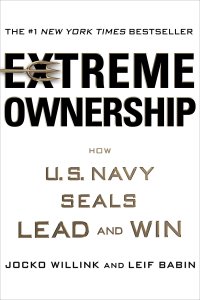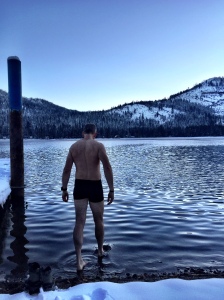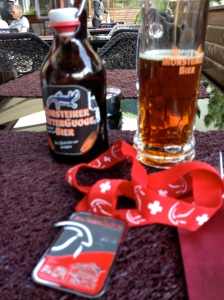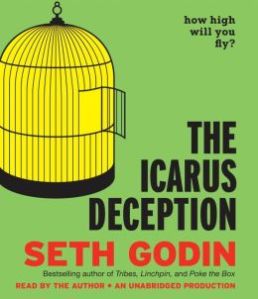It was my 54th birthday last month. Inspired by Kevin Kelley’s 68 Bits of Unsolicited Advice, here are my reminders to myself about what works for me, broken into 4 sections:
- Getting the Day off to a Great Start
- Staying on Track During the Day
- Eating and Exercise
- Relationships and Communication
I hope some of these are of value to you. Let me know what you think!
Getting the Day off to a Great Start
1. Get the sleep you need.
If you are tired, your chances of doing good go down, and saying bad things and making poor food choices go up.
2. Don’t use an alarm to wake up. (Unless you have some early appointment you can’t miss)
That way you’re not jolted out of bed mid-deep-sleep cycle. If you get regular on your bedtime, your body will get regular on your wake-up time. If you need to go to bed earlier to get the sleep you need, do it. If you’ve traveled across time zones, you’ll just have to do the best you can!
3. When you wake up, get up.
If you’re procrastinating about getting up, you either didn’t give yourself enough time to sleep, or you aren’t really excited about what’s going on in your life, so better to get up and start doing something to change that
4. If you’re lucky enough to have a partner, kiss them before you get out of bed.
It gets the oxytocin flowing, makes you both smile, and reminds you how lucky you are.
5. Make your bed straight away.
It gives you an easy accomplishment and at least one corner of your life is now neat and tidy. (And now you’re even less likely to go back to bed)
6. Start every day with a moment outside (ideally at sunrise).
Look, listen, smell, feel, and marvel at nature. (I spent a long year strung out trying to sleep in the front room on a busy road where the trucks would shake me awake at 4 am. I’m incredibly lucky to now live in a quiet location surrounded by trees. We need restful sleep and contact with nature to be our best selves.)
7. A cold shower or plunge is the most effective way to wake up
Even after 5 years, I’m still shocked by the cold water. But a cup of coffee is no match for the charge this gives your entire body. I believe it’s a great stimulant for autophagy as well, but I’ll leave that to the scientists to prove.
8. 10–20 minutes of daily yoga helps your body move better.
Functional movement is essential to healthy aging (and you’ll need to move after that cold shower, lol). We need core strength, flexibility, and balance. Aging starts wreaking havoc when we stop moving or fall down.
9. 5–10 minutes of meditation gets your head and heart in the right place
Days typically don’t go so well without the right attitude. And you can get amazing insights on what’s bugging you and what you need to focus on.
10. Take a moment to notice some detail every day.
Smell the roses (literally), look at all the different gardens, listen to the birds and insects. As Ferris Bueller would say, life moves pretty fast. If you don’t stop and look around you might just miss it
11. Writing down things you’re grateful for reminds you how lucky you are (vs. being upset about what you don’t have and the bad things that happen).
I aim for a least three things. Sometimes it’s just the details like the smell of coffee, or putting on clean clothes. Other days it’s family, friends, having an income, or somewhere to stay.
12. If something is troubling you, journal it.
Write out the worst-case scenario, with all of your worst fears and interpretations of human nature. Then, thank your lizard brain for trying to protect you, and go back and write a draft that gives the benefit of the doubt to you and everyone else. You’ll be amazed at how this can help you re-frame an issue or get it into perspective.
13. Write down the 1–3 things you can do that will make it a good day and do them.
Don’t be unrealistic in your expectations (I’m always over-estimating what I can do in a day). Don’t make the day’s success dependent on others (that’s just setting yourself up for disappointment).
14. Do the hardest thing first. Don’t get distracted with less important things.
The day will pass quickly, and our ability to resist temptation declines as the day progresses, so do the hardest, most important things first while your willpower is still strong and hopefully before other things start competing for your attention.
Staying on Track During the Day
15. Go on a permanent diet from current affairs and daily stock prices.
When the COVID-19 shutdown happened, I only added to my anxiety by ending my news and stock price holiday. It’s almost 100% noise, very little signal. People will tell you if something really important happened anyway.
16. Prioritize spare moments for quality long-form audio and writing.
You’ll learn a ton and have a sense of actual accomplishment. It’s easy to use a couple of minutes here and there to check email or social on your phone. Instead, make Audible or Kindle your go-to at those moments.
17. If you happen to catch yourself surfing online mindlessly, stop. Remind yourself what you wanted to be doing and get back to doing that.
The internet is an amazingly seductive and infinite treasure trove. It’s best to ration your social and email to specific time blocks 1–2 times a day.
18. If you’re frustrated with how the day is going, take 5.
Stand up and stretch, do some squats or pushups, get a glass of water, pet the dogs, and/or go outside for a walk. Give yourself a little mental break to work out how to take the next little step forward on what matters most. Then come back to your workspace and do it.
19. If you need energy, call a high-energy friend to say hi.
The conversation will brighten the day and recharge you better than any cup of coffee, or hit of sugar. Work out who those positive people are and keep a list handy for when your energy flags.
20. Do your best to do things well
Find contentment with honest dedication and process, not the outcome (you can only control your inputs, not the outcome)
21. Aim high, but be ready to adapt to whatever happens.
It’s great to dream big and have high hopes for every day but expect that things can and will go wrong. So be ready to course-correct as necessary.
22. You really only learn by doing
You can intellectually get something, but the only way to internalize it is by doing it.
Eating and Exercise
23. If you’ve got a headache, have a glass of water.
If it goes away, you were probably dehydrated. If your skin is dry or your urine is anything more than pale yellow, you’re definitely dehydrated. If your urine is red (and you haven’t been eating beetroot, lol) go see your doctor!
24. If you think you’re hungry, have a glass of water.
Most times if you forget about it, the hunger will go away again.
25. Wash your hands before preparing and eating anything.
Thank you COVID-19 for reminding us about good hygiene lessons our parents tried to teach us!
26. It’s almost always better to share food with others than eat alone.
We are social beings. Most times a conversation over food will brighten your day.
27. Taste it before you serve it, and fix it if it’s not right.
If it tastes right to you, it’s probably going to taste right for most other people. You can’t fix it once it’s on the table. The right balance of salt, sweet, fat, and acid is the key to delicious for almost any food that’s not a bakery item. The more you practice tasting and adjusting with one or more of these the better you’ll get.
28. If it’s not great and you’re not starving, don’t keep eating it.
You’ve only got room for the good stuff, so don’t waste that room filling up on mediocre.
29. Eat slow, savor, and stop when you’re full.
Otherwise, you’ll just be uncomfortable for the next couple of hours. If you feel compelled to finish everything on the plate, try just leaving a last bite on the plate each time to break the compulsion. If you catch yourself eating too quickly, and faster than others at the table, slow down and savor the remaining bites. If you’ve finished, and you still think you’re hungry go floss and brush your teeth (you’re less likely to want to snack once you’ve invested those couple of minutes)
30. You don’t need to save all the leftovers from a party or meal.
Give them to someone hungry, or throw them out if you can’t.
31. If it’s not in the house, you’re less likely to eat it.
This is remarkably effective. And really difficult if you’ve got kids or you don’t get rid of the party leftovers.
32. Coffee and dark chocolate are delicious, but too much too late in the day and they’ll just mess with your sleep.
Some folks are definitely more sensitive than others. Learn how your body responds. For me around noon is the cut-off. I usually fall sound asleep within minutes of my head hitting the pillow. If I have any trouble it’s either coffee, dark chocolate, or stress.
33. Good beer, wine, and spirits are delicious, but alcohol always borrows some happiness from tomorrow
Even if it only impacts sleep quality. More alcohol equals more food and feeling worse about yourself the next day. It’s almost sacrilegious for an Aussie to say this, but you don’t need to finish the bottle, you can actually just pour it out.
34. Yes/no rules take less effort to stick to.
It’s much easier to not drink 2 days in a row than to stop at two drinks. Or don’t drink coffee after 2 pm, or don’t eat at children’s birthday parties, than to decide at the moment if you should or shouldn’t because willpower is not reliable and runs out as the day progresses
35. Self-discipline creates self-respect
It might not be the most fun choice, but you’ll always feel better later. Cold showers and exercise, or getting something finished for work are a case-in-point.
36. You finish running 100 miles by making one step at a time.
If you can take another step without endangering your long-term health, you just keep going. Big accomplishments are the sum of lots of small efforts.
37. Exercising in nature is always better than indoors.
An hour a day in nature is much better for you mentally and emotionally and goes by a lot faster than an hour on the treadmill or stationary bike.
38. If it’s later in the day and you don’t feel like exercising, just try starting.
You’ll probably end up getting it done, and you’ll almost certainly feel better
39. Try taking a different trail or street on your next run or ride or drive.
Another benefit of COVID-19 was exploring all the streets in my neighborhood that I’d never been down. Variety and surprises just make life more interesting.
Relationships and Communication
40. Strangers welcome conversations. People like to be asked.
You’ll be surprised how often that turns out better than you expected. People are distracted or scared. If you want to connect with others, make the first move. Don’t ever expect anyone to return the favor (most people are doing their best just to get by). Be delighted when they do.
41. Be brave and start a conversation
Say something nice and/or ask a question. You’ll probably brighten your day and theirs.
42. If that text, message, or email is getting too long, it’s time to talk.
If there’s room for misinterpretation and it matters, go see them, get on a video call or just call them. It’ll save time in the long run.
43. You reap what you sow. Giving is better than receiving. Showing you care makes such a difference.
Good turns are rewards in themselves. Make breakfast or a cup of tea. Give someone a hug or asking how they are doing. Sending an article or a podcast to someone you think it would be relevant for. Introducing people with shared interests. Using Facebook to remember birthdays (and even old friends). Using LinkedIn to recognize promotions (and old colleagues and connections).
44. Attention is the most precious thing you can give
Spend it wisely on the people and things that matter to you (vs. giving it away to marketers and the endless distractions of the internet). If you can find 10 minutes to really listen to someone and give them your undivided attention, that is a lot better than an hour of partial attention.
45. If you have the faintest inkling you did something wrong, you probably did
So you better do what you can to make amends!
46. Usually, you are the only person that can and will fix the situation
So you better start fixing it!
47. The sooner you act on fixing things, the sooner you’ll start feeling better.
Come up with a plan and then act on it. Every tiny step forward will make you feel better. Sitting around feeling bad won’t help anyone.
48. Learn to love yourself for your sake and everyone else’s
Self-loathing has a nasty way of impacting the way you judge others. If you learn how to be nice to yourself, it’ll help you to be much nicer to everyone else.
49. If you’re getting annoyed, work out what’s triggering you.
You’re probably being triggered/reacting to something you don’t like about yourself. Find kindness by reminding yourself that another person is being like you on another day
50. 99 times out of 100 the other person is trying to do the right thing
No matter how much it doesn’t make sense to you, it probably does to them, so find out what they were thinking before you pass judgment
51. Mirroring and empathy work better than problem-solving
Most of the time we just want to be heard first. No matter how much you want to help others avoid mistakes, or tell them our brilliant way to fix whatever challenges they’re facing, they’re only going to listen to advice when they tell us they’re ready to hear it.
52. Your kids are meant to be who they are, not who you wanted to be.
They’re not your second chance to be who you wanted to be, so stop expecting that from them. Help them to find and be their best selves.
53. Use prompts and your environment to mitigate mistakes when you’re tired or cranky
It sucks that judgment errors (whether those are using the wrong words or losing your temper or eating or surfing mindlessly) can add up to outweigh all the good work you’ve done earlier in the day and that those mistakes are most likely when you have the least willpower to manage them. Set up your environment to help you succeed (e.g. making sure there aren’t undesirable snacks in the kitchen), and prepare yourself mentally for the desired behavior (when x triggers me, I will do y). Don’t plan hard mental activity for the afternoons if that’s when you get tired, instead reserve that time for calls, admin activities, cleaning the house, and exercise.
54. Reflect on the day and prep for tomorrow
Take a few moments to reflect on the best things that happened. Note a couple of things you could have done better. Sketch out a plan for tomorrow. Layout your clothes for the next morning. Go to bed in time to be ready for another great day.


 It’s cold. 9 degrees (-13 C) this morning. 21 degrees (-6 C) now.
It’s cold. 9 degrees (-13 C) this morning. 21 degrees (-6 C) now. 10 weeks ago I started an online course called the
10 weeks ago I started an online course called the 
















